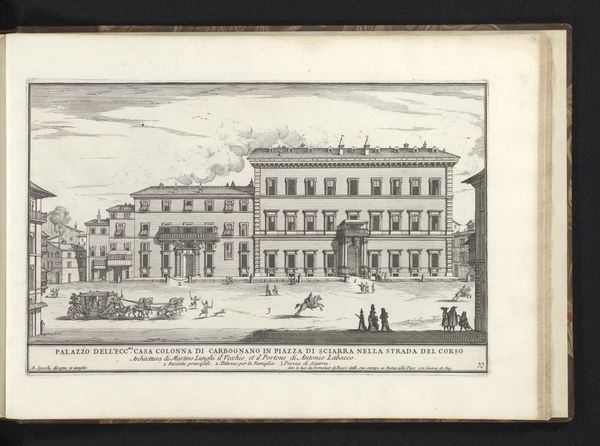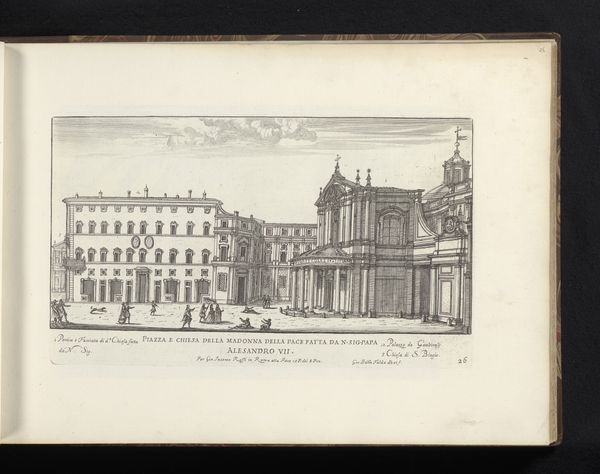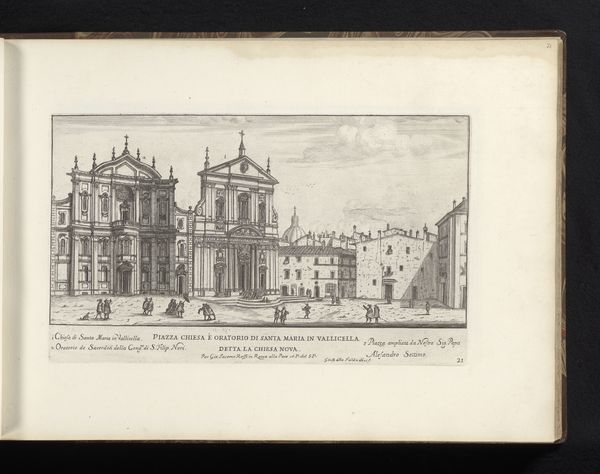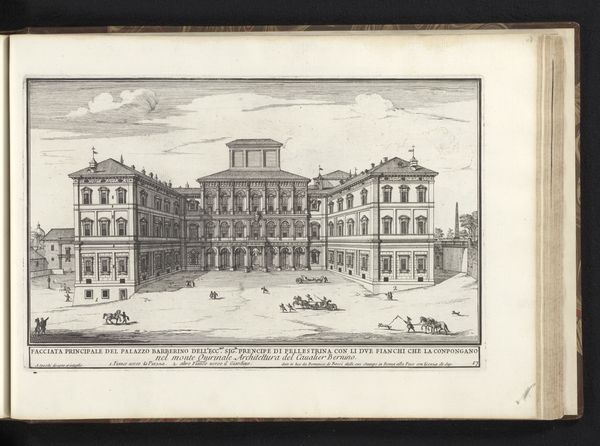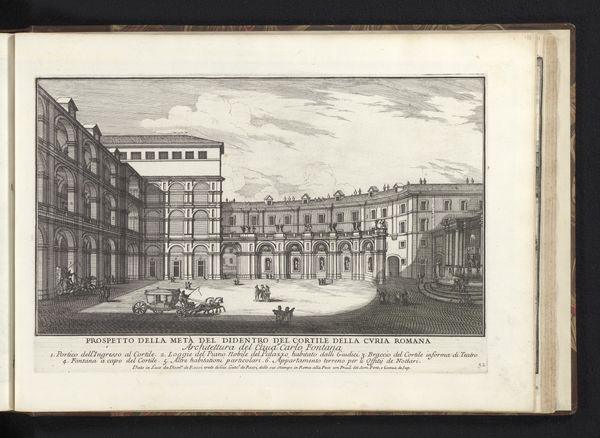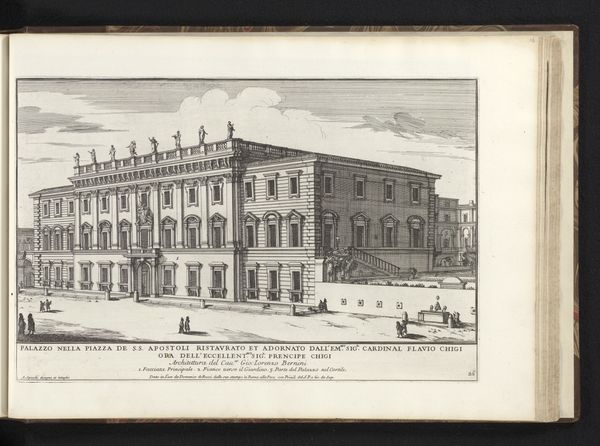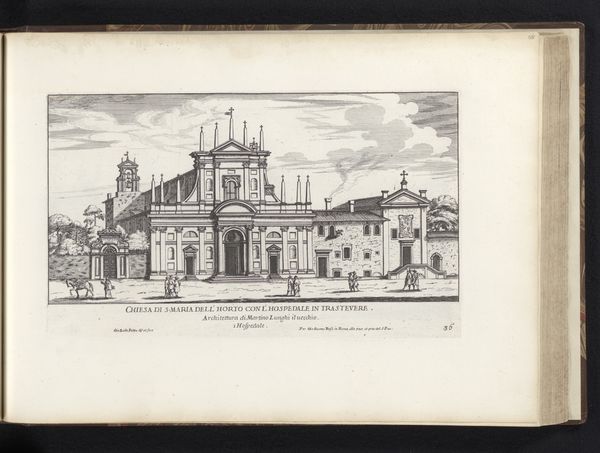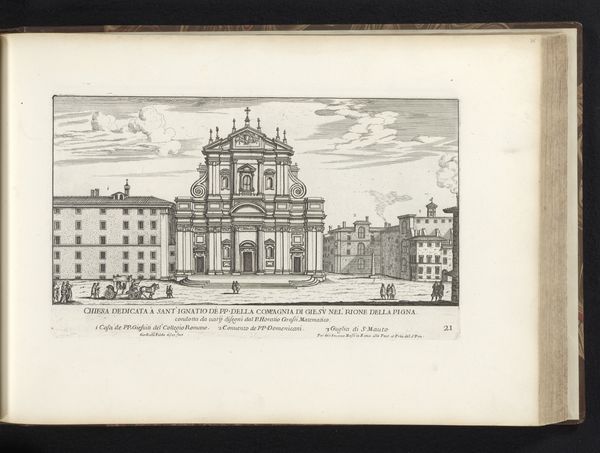
drawing, engraving, architecture
#
drawing
#
baroque
#
pen drawing
#
line
#
cityscape
#
engraving
#
architecture
Dimensions: height 210 mm, width 330 mm
Copyright: Rijks Museum: Open Domain
This print of the Palazzo Muti in Rome was made by Alessandro Specchi, an Italian architect and engraver, sometime in the late 17th or early 18th century. The image creates meaning through visual codes and historical associations, showcasing the architectural style of the Roman Baroque period. In this era, the Papal States were a dominant political force, and the architecture of Rome often served to project power and influence. Aristocratic families like the Muti commissioned grand palazzos, like this one, to assert their social standing and contribute to the city's prestige. Specchi's print, therefore, not only documents the physical structure but also reflects the social hierarchies of the time. Understanding this artwork requires exploring the patronage system, the role of the Catholic Church, and the urban development of Rome. By researching these aspects, we can better appreciate how art is contingent on its social and institutional context.
Comments
No comments
Be the first to comment and join the conversation on the ultimate creative platform.

